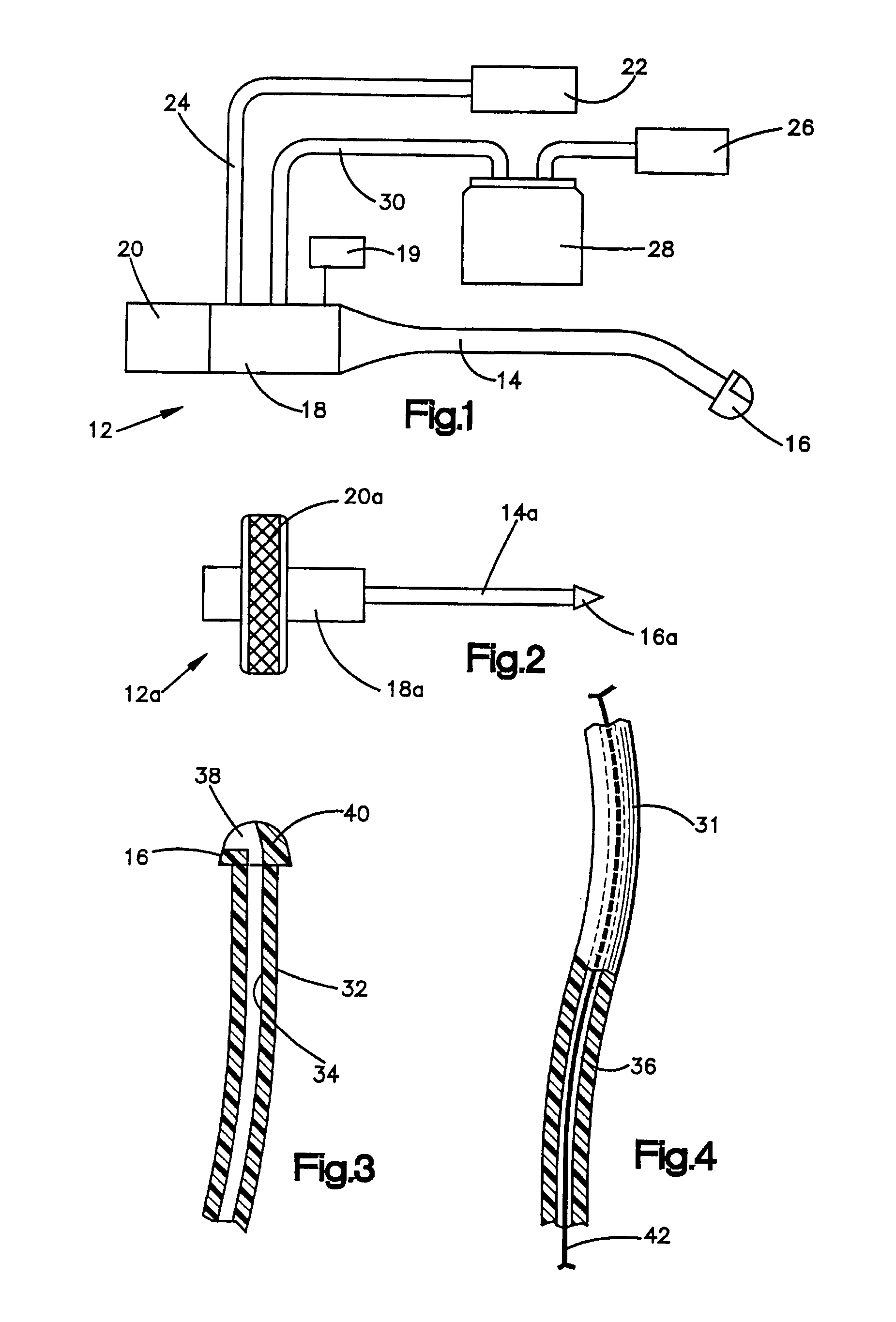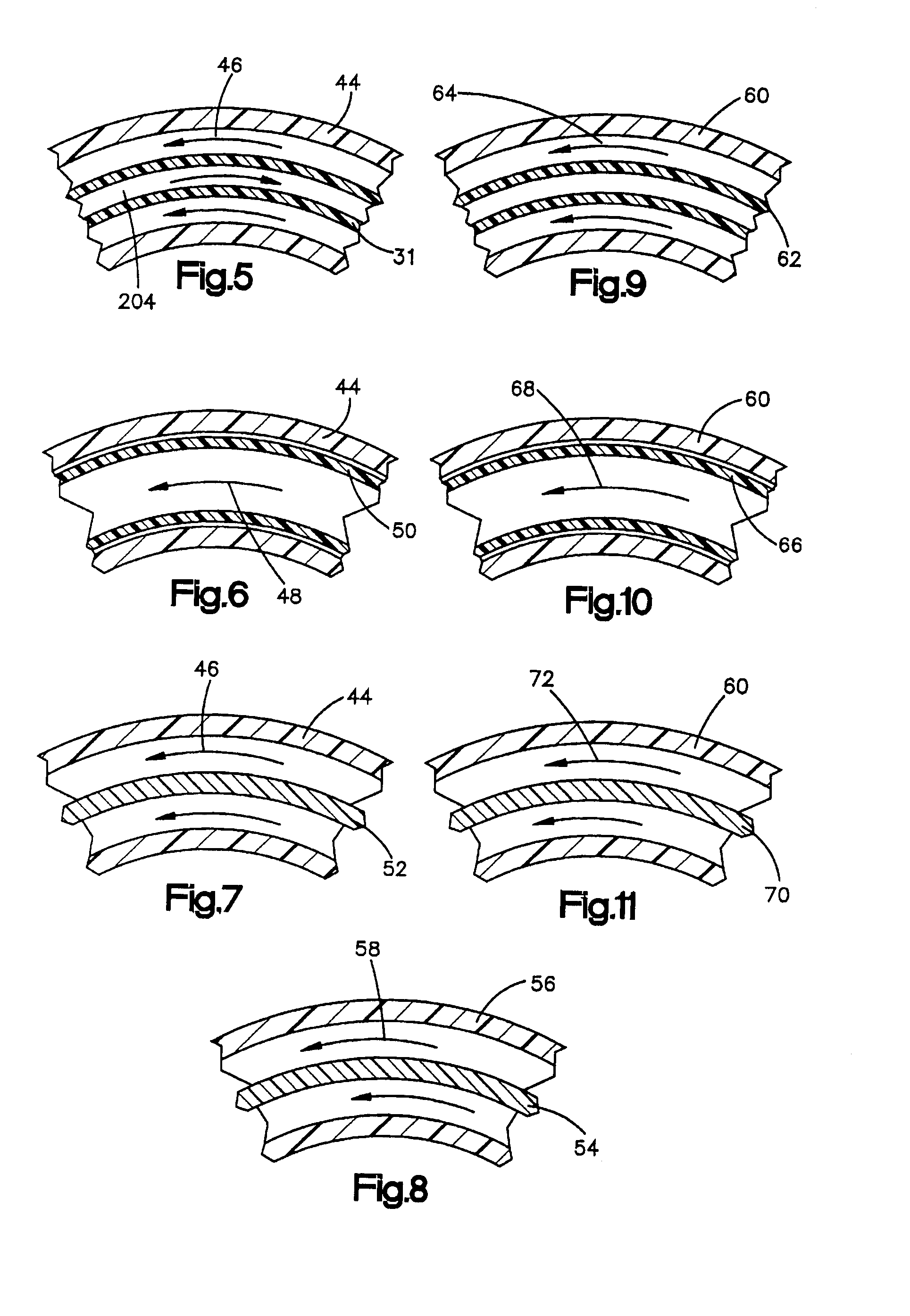Method for harvesting and processing cells from tissue fragments
a technology of tissue fragments and cells, applied in the field of tissue removal and tissue grafting, can solve the problems of no suction while cutting, no removal of cut bone or tissue, one or more deficiencies, etc., and achieve the effect of less likely to damage normal tissue or joint surfaces
- Summary
- Abstract
- Description
- Claims
- Application Information
AI Technical Summary
Benefits of technology
Problems solved by technology
Method used
Image
Examples
Embodiment Construction
[0045]The present invention is described herein with reference to a percutaneous bone removal and harvesting apparatus and method. It should be understood that the present invention is not limited to the removal of bone tissue, but is useful in the removal of any hard or soft tissue in the body such as excess, unwanted, or tumorous tissue or tissue used for reimplantation or grafting.
[0046]A percutaneous bone removal apparatus 10 (FIG. 1) in accordance with the present invention includes a flexible drill 12. The flexible drill 12 has a flexible shaft 14 and a cutting tip 16 at the distal end of the shaft 14. The proximal end of the flexible shaft 14 is connected by a housing 18 to a motor or other power source 20 to provide rotational motion or reciprocating motion in a manner known in the art. Alternatively, the drill 12 may have an angled drive, such as 90.degree. drive or any angle, with the motor drive connected at an angle to the longitudinal extent of the suction and cutting a...
PUM
 Login to View More
Login to View More Abstract
Description
Claims
Application Information
 Login to View More
Login to View More - R&D
- Intellectual Property
- Life Sciences
- Materials
- Tech Scout
- Unparalleled Data Quality
- Higher Quality Content
- 60% Fewer Hallucinations
Browse by: Latest US Patents, China's latest patents, Technical Efficacy Thesaurus, Application Domain, Technology Topic, Popular Technical Reports.
© 2025 PatSnap. All rights reserved.Legal|Privacy policy|Modern Slavery Act Transparency Statement|Sitemap|About US| Contact US: help@patsnap.com



